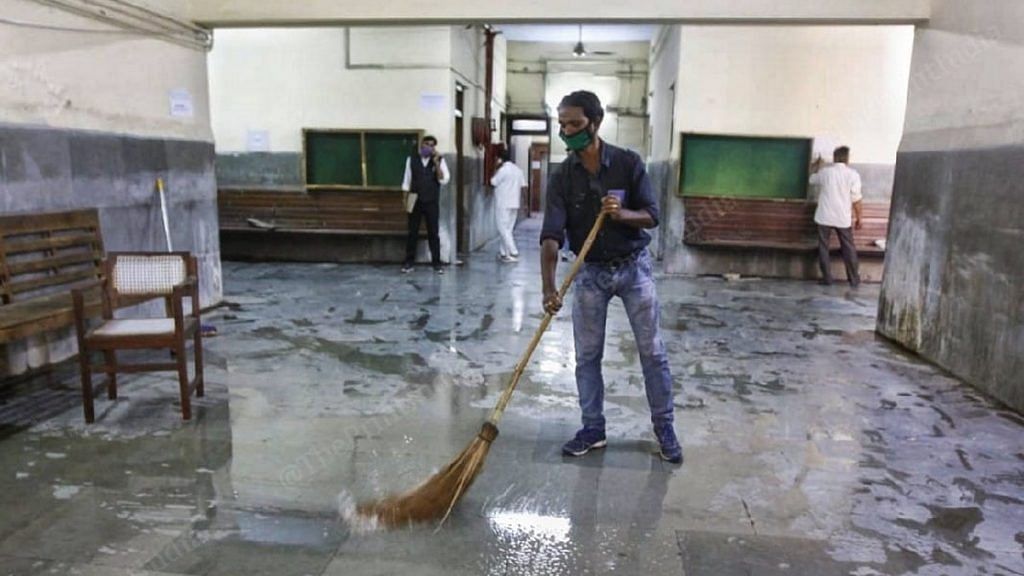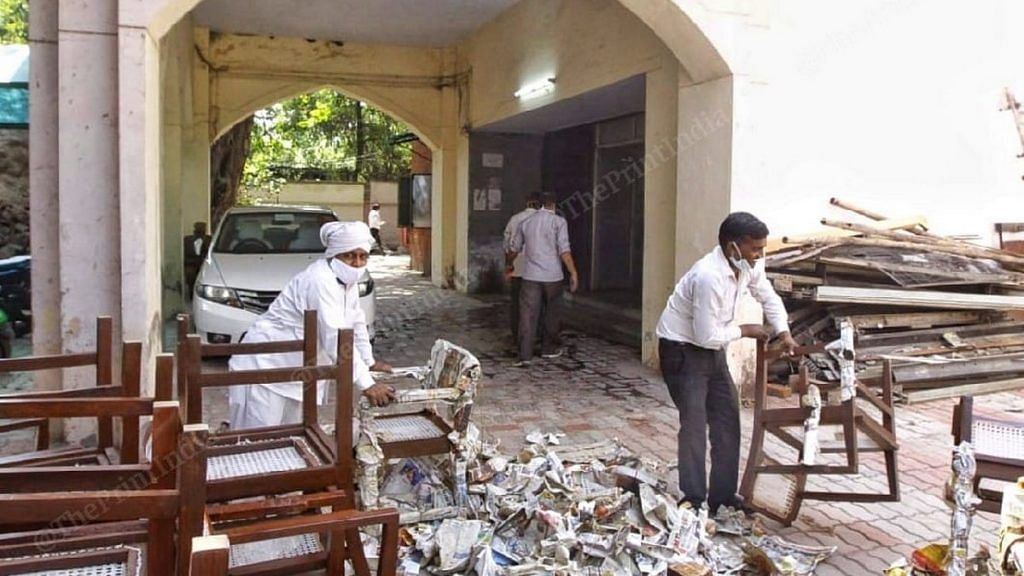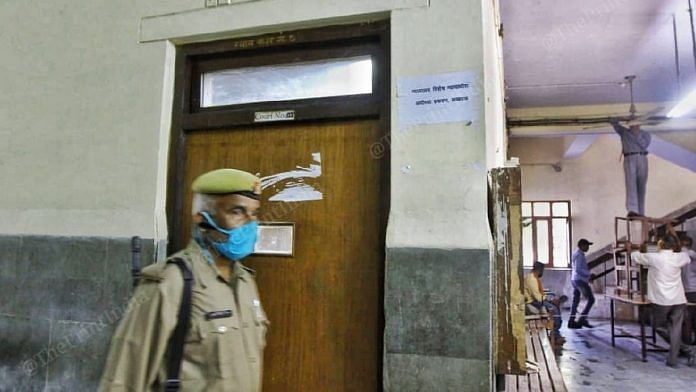Lucknow: The walls outside courtroom number 18, coloured maroon by paan stains, are being rigorously scrubbed. New chairs are being unpacked, the floor is being mopped, and the courtroom at Lucknow’s Old High Court building is being disinfected to keep mosquitoes out.
It’s a day before the special CBI court pronounces its verdict in the Babri Masjid demolition criminal case, in which former deputy PM L.K. Advani, former Union ministers M.M. Joshi and Uma Bharti, former UP CM Kalyan Singh and other leaders of the Bharatiya Janata Party and the Vishva Hindu Parishad are among the 32 accused on trial.

The Babri Masjid in Ayodhya was demolished on 6 December 1992, but the case moved at a snail’s pace due to judicial delays. The trial only began in 2010, and still went on slowly, even after the Supreme Court ordered day-to-day hearings on 19 April 2017, and said the judge hearing the case, S.K. Yadav, would not be transferred. Now, finally, after several missed deadlines, judge Yadav will pronounce the verdict Wednesday.
The Ayodhya prakaran (episode) courtroom and the complex are under a heavy security blanket — over 150 personnel from the police, CID, Lucknow intelligence unit and the CRPF are manning the complex, dog squads have conducted three rounds of searches since Tuesday morning, new CCTV cameras are being installed in the lobby, and a control room is being set up at a nearby police chowki to keep a “close watch” on all visitors.
Also read: Day before Babri Masjid demolition judgment, all you need to know about the criminal trial
Five accused inside courtroom at a time
Courtroom number 18, which usually stands ignored, is expected to attract many visitors Wednesday, so the authorities have put some rules in place to manage the crowd better, especially considering the Covid-19 pandemic.
According to a court staff member who did not wish to be named, it has been decided that only five out of 32 accused will be inside the courtroom at any time. The rest will be seated outside in the lobby.

“Five accused, along with limited court staff, the defence lawyer and the prosecution, will be in the courtroom at one point. As the verdict proceeds and the judge calls the accused inside by name, they will keep going inside,” the staff member said.
The judge has asked all 32 accused to be present in court Wednesday, but only 26 are expected to be there. The ones missing will include Shiv Sena leader Satish Pradhan, who is admitted in the hospital due to gangrene, Uma Bharti, who has got Covid-19, and Advani, Joshi and Nritya Gopal Das due to old age. According to a prosecution lawyer, the judge may issue non-bailable warrants against the accused for non-appearance.
The staff member quoted above said if an accused is convicted, the judge will pronounce the sections proven against him or her, adding that the sentencing is also expected on the same day. Each accused will be handed a separate sentence for each section he or she is convicted under.
The defence lawyers representing the accused too have their paperwork ready — whether the accused are convicted or acquitted, the defence will have to move bail pleas.
“In case there is an acquittal, we will have to move bail under 437 CrPC by furnishing a personal bond for each person. In case they are convicted, then we will move bail on the same day before the same court so that they are not sent to judicial custody,” a defence lawyer who did not wish to be named, said.
Also read: Ready to be hanged, but won’t seek bail — Uma Bharti writes to Nadda ahead of Babri verdict
‘Ayodhya prakaran has concluded’
Over the years, the Ayodhya prakaran courtroom has seen several witnesses narrating how the Babri Masjid was demolished using axes, heard audios of kar sevaks raising slogans, seen evidence on video and arguments by the defence. But one the verdict is pronounced, it will be revamped with a new look, before being assigned a new case.

The 27-inch Samsung TV and two VCRs that were used in the court each time a witness appeared and was asked to corroborate his or her statement with videographic proof, has been packed up, and the tiny room that has acted as a ‘war room’ of sorts, where prosecution lawyers and CBI counsel spent hours sifting through stacks of documents for years, now appears empty.
“Ayodhya prakaram khatam hua,” says a CBI officer who doesn’t wish to be identified. “For years, we sat here and worked on tracing witnesses, bringing all evidence in order and managing the paper work. Today, all of it has come to an end. We are winding up,” he adds.
Also read: Unseen photos of how Babri Masjid demolition was planned and executed in 1992






